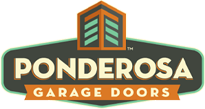The overhead garage door and the automatic garage opener are a match made in heaven. Together they add comfort, security and value to your home.

Before 1926 if you wanted to get into your garage, you had to get out of your car, brave whatever tricks the weather was playing and heave open the doors with your bare hands.
After 1926, you could, at least in theory, take advantage of a new-fangled invention by C.G. Johnson.
Mr. Johnson invented the overhead garage door opener, but it wasn’t until around World War II that openers became popular. At that time, remotes and keypads became a mainstay. Today’s models have some great new features, but the basics have remained the same for decades.
Today, garage door openers come in a few variations, from basic to smart with horsepower to match your door. If you’re in the market for a new opener, use our guide to explore the options available. Or, just give us a call. We’ll recommend a garage door opener that’s right for your needs.
Choose a Type of Garage Door Opener
Though several types of openers are available, they share a similar design. A motor powers a carriage or trolley down a rail. The trolley pulls or pushes the door to control it.
The difference between openers is the mechanism that drives the trolley: chain, belt, screw and direct drive. All types of openers are durable and require only periodic maintenance.
Garage door openers are attached to the ceiling and plug into an electrical outlet. Openers are available with either AC or DC current. DC motors are smaller, quieter and may have a battery backup.
Before you settle on an opener, make sure to check that it is compatible with your door and garage. You’ll need to know if your door is a standard height (7 feet). Other important considerations are the size and weight of your door. A wood doors and double-wide doors are heavier than a standard, single door. Either will require a more powerful motor.
- Chain-Drive Garage Door Opener: A metal chain drives the trolley. These systems are dependable and affordable. They produce more vibration and noise than some of the other types of openers. The chain needs to be oiled about once a year
- Belt-Drive Garage Door Opener: If you’re looking for a quiet door, consider a belt-drive model. They work similarly to the chain system, but they use a rubberized belt. In time, the belt may stretch and need to be adjusted. They cost more than a chain-drive.
- Screw-Drive Garage Door Opener: A threaded steel rod rotates to drive the trolley on the track. These models are suited for use with heavy doors. They’re louder than a belt system but quieter than a chain drive.
- Direct-Drive Garage Door Opener: In these quiet openers the motor and trolley are combined. The motor travels on the track to raise and lower the door. With only a single moving part, direct-drive openers create minimal vibration and noise.
Choose the Right Amount of Horsepower
More horsepower equals better lifting power. Residential models range from about 1/2 to 1 horsepower. A 1/2 horsepower motor works for a typical single garage door. However, a stronger motor may last longer. The heavier your door, the stronger the motor should be.
Choose the Features You Need
Standard garage door features include remotes, a keypad for the wall, safety sensors and manual release cord. For many people, a basic door opener fits the bill. But, if you like hi-tech gadgets and the idea of a “smart home,” check out the latest openers. They’re outfitted with features that add to your security and convenience.

Optional features you may want include:
- Mini remotes that attach to a keychain.
- Wi-Fi capability that allows you to control the door remotely, with a smartphone or other internet-connected device.
- Automation system separate from wi-fi that gives remote access.
- Compatibility with some vehicles to allow for controls built into your car.
- Auto-close lowers the door automatically after a period of time of your choosing.
- Locks to prevent opening from a remote.
- Battery backup that keeps the opener working when the power goes out.
- Rail extensions for use with higher doors.
- Rolling code for the remote.
- External keypad that opens the door when you enter the code.
Choose a Safe Door Opener
Garage door openers can last for decades. If yours is old, manufactured before 1993, it may not include the safety features required in today’s openers.

The eyes signal a closing door to stop and reverse direction if something crosses the beam.
These features include electronic eyes that create a beam across the door opening. The eyes signal a closing door to stop and reverse direction if something crosses the beam.
Another required safety device is the reversal mechanism that activates if the closing door contacts an object. Together, these two features prevent the door from coming down on people, animals or property.
Be sure to check out the security features that protect against burglars. Some remotes use an ever-changing code that can prevent or slow down bad guys from cracking your remote signal. These systems change the code on the remote between each opening of the door. Standard remotes have a fixed code which makes it easier for a thieve to open your door and enter your home. You can and should reprogram your remote from time to time.
An external keypad allows you to open the door by entering a security code or by fingerprint recognition. These are both a convenience and security feature since they allow you to quickly get inside without carrying a remote in your pocket.
Courteous, Efficient Garage Door Repair and Installation
Is it time to update to a new garage door opener? Call Ponderosa Garage Door for repairs, installation and maintenance. We specialize in quality work at affordable prices. Contact us today for an estimate.


